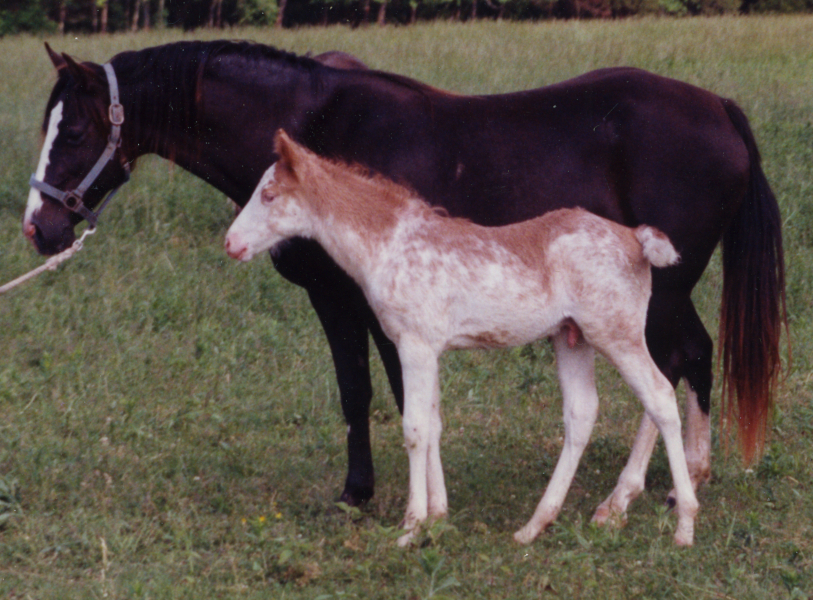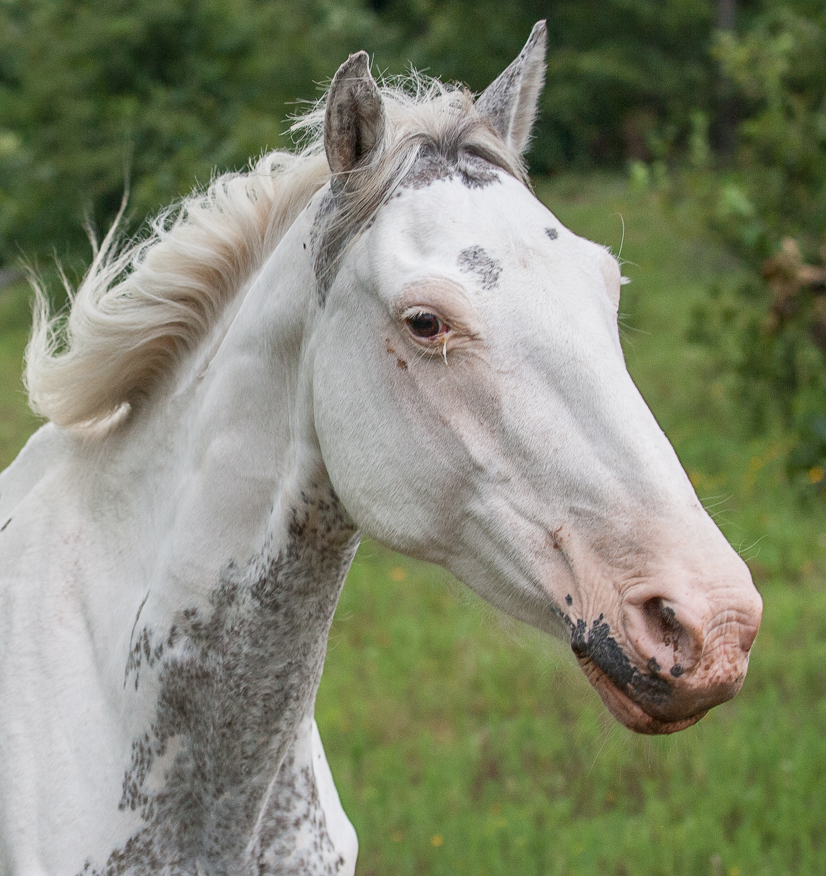Quick Summary

Click here for Price and Turnaround Time
Phenotype: Sabino is a white spotting pattern that is characterized by white markings on legs often accompanied by white ticking or roaning of the midsection and a blaze on the face.
Mode of Inheritance: Incomplete dominance
Alleles: N = Normal or non-sabino, SB1 = Sabino 1
Breeds appropriate for testing: Appaloosa, Azteca, Haflinger, Miniature Horse, Missouri Foxtrotter, Noriker, Paint Horse, Pony of the Americas, Quarter Horse, Shetland Pony, Spanish Mustang, Tennessee Walking Horse
Explanation of Results:
- Horses with N/N genotype will not have sabino patterns and cannot transmit this sabino 1 variant to their offspring.
- Horses with N/SB1 genotype will have two or more white legs/feet, often with white markings on the legs, an extensive blaze and ticking or roaning on the midsection. They may transmit this sabino 1 variant to 50% of their offspring. Matings with N/N genotype will result in a 50% chance of producing a foal with the sabino 1 pattern.
- Horses with SB1/SB1 genotype will be at least 90% white and will transmit the sabino 1 variant to all of their offspring. Matings with any genotype are predicted to produce foals with the sabino 1 pattern.
White Pattern Panel 1
$65 per animal
White Pattern Panel 2
$85 per animal
Full Color/Pattern Panel
$155 per animal
Sample Collection
Horse DNA tests are carried out using cells from the roots of a hair sample (roughly 20-40 hairs).
1. Grab about 10 hairs at the base.
2. Wrap the hairs around your finger and give it a quick pull.
3. Check the ends to make sure the pulled hairs have roots.
4. Repeat the process until you have collected about 20-40 hairs with intact roots.
5. You can choose different places on the mane or tail. NOTE: For foals, we recommend pulling all hairs from the tail only.
6. Tape the hairs to the submission form and fold the form along the dotted line to protect the sample. Do not use ziploc bags as they can cause condensation that allows mold to grow on the hair.
7. Place the folded form containing the sample in a paper envelope and mail it to the laboratory.

Sabino is a generic description for a group of similar white spotting patterns. The sabino pattern is described as irregular spotting, usually on the legs, belly, and face, often with extensive roaning. A mutation was discovered that produces one specific type of sabino pattern. It has been named Sabino 1 as it was the first to be discovered and because it does not explain all sabino-patterned horses. More mutations will probably be identified that account for other sabino patterns.
Sabino 1 is inherited as an autosomal incompletely dominant trait. The mutation causing the sabino pattern is located in the gene KIT and results in a partial loss of exon 17. One copy of the sabino 1 allele is expected to produce horses with two or more white legs or feet, often with white running up the anterior part of the leg, an extensive blaze, spotting on the midsection, with jagged or roaned margins to the pattern. Horses with two copies of the sabino 1 allele are at least 90% white and are referred to as sabino-white. The sabino 1 mutation is found at a relatively low frequency in most breeds with this pattern.
Testing for sabino 1 allows breeders to identify homozygous animals (animals with two copies of the variant) which will always produce foals with the sabino 1 pattern.
